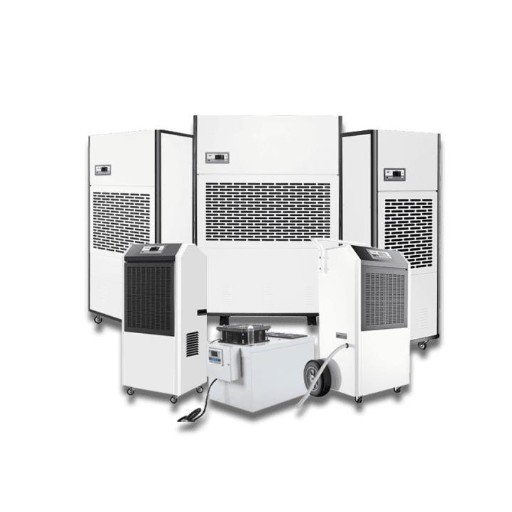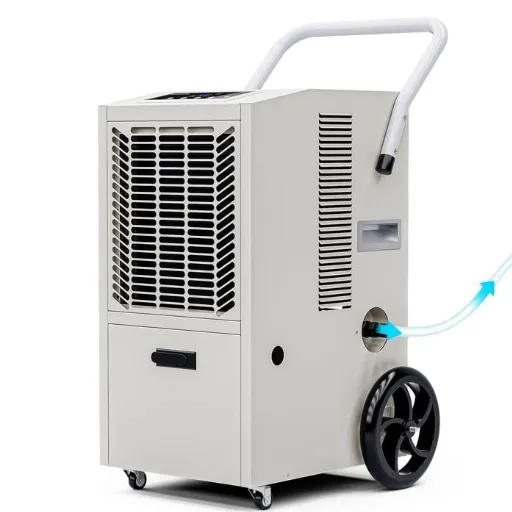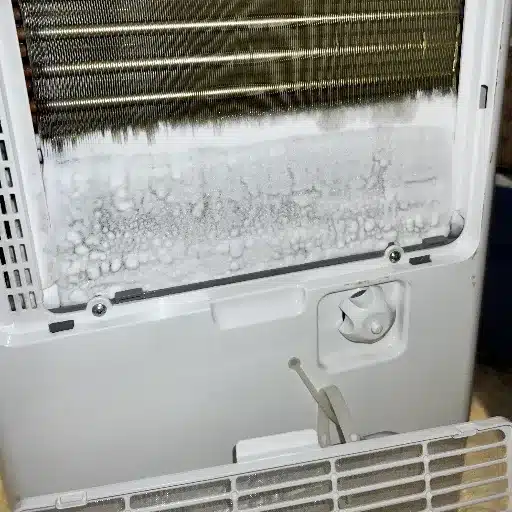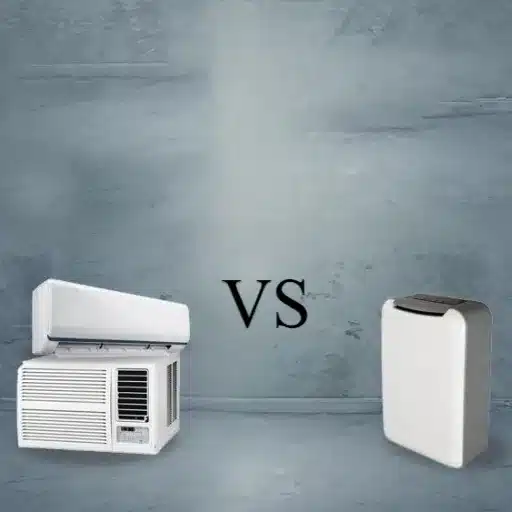Running an efficient warehouse operation requires meticulous attention to detail, especially when it comes to maintaining optimal environmental conditions. One often-overlooked but critical factor is humidity control. Excess moisture in the air can lead to a host of problems, including damaged inventory, compromised equipment, and increased energy costs. This is where industrial dehumidifiers come into play. These powerful machines are designed to regulate humidity levels, ensuring a stable and controlled environment that safeguards your assets and enhances operational efficiency. In this guide, we’ll explore the role of industrial dehumidifiers in optimizing warehouse operations, discussing their benefits, functionality, and how to select the right one for your specific needs. Whether you’re looking to protect sensitive materials, improve workplace safety, or boost productivity, understanding the capabilities of industrial dehumidifiers is essential.
How Does a Dehumidifier Work in a Warehouse Setting?
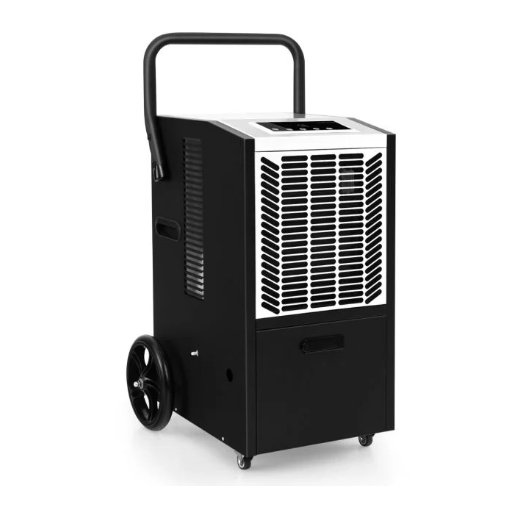
Understanding Industrial Dehumidifier Mechanisms
Industrial dehumidifiers achieve optimal humidity in warehouse environments by removing excess moisture from the air. These appliances work on either refrigeration or desiccant principles: refrigerant dehumidifiers cool the air, condensing moisture as water, which is collected and drained away, whereas desiccant types use absorbent materials to directly grab moisture from the air. Both methods keep humidity under control within a set level, thus avoiding moisture damage.
It is important to maintain humidity within the range prescribed for warehouses storing moisture-sensitive products such as electronics, paper products, and perishables. High humidity causes mold to grow, corrodes metal, or even breaks down the packaging of goods being stored. Their machinery is equally protected from breakdowns if humidity becomes an issue, thus ensuring smooth operations and fewer repair and maintenance expenses over time.
An effective industrial dehumidifier is chosen depending upon the size of the warehouse, the humidity load it has to face, and the specific environmental conditions it has to confront. Among the key considerations are the capabilities of the device to manage the moisture load it will be confronted with, its power consumption when in operation, and if the warehouse requires the unit to be continually operative, either at very low temperatures or at elevated temperatures. Understanding how they work and choosing a dehumidifier of suitable capacity will ensure that companies can protect their assets, comply with legislation, and improve work efficiency.
Role of Humidity Control in Warehouse Efficiency
Humidity control is vital to maintaining the integrity of stored goods and the efficient operation of warehouses in general. They are subject to mold growth due to high humidity; corrosion and deterioration occur in the materials from which items are made. Very low humidity may rob certain materials of their water content with which wood or paper will dry and result in their being brittle. During a change of humidity within the safe range, businesses ensure their inventory is not damaged, which will prevent wastage and consequent losses.
Besides this, efficient humidity control helps in protecting the warehouse equipment and facilities. On the contrary, electronics and machinery would be highly susceptible to moisture and lose their operational reliability with a shorter lifespan. Thus, controlling the humidity level helps in minimizing such occurrences, thereby ensuring the continuity of operations and reducing in costs involved in repair or replacement.
Yet, controlled humidity inhibits any sort of hazard to staff safety and boosts its conformance to various industry regulations. Too much moisture can bring slippery floors or lower air quality, with health hazards being carried along. Apart from that, a host of industries, like pharmaceutical and food storage, have to abide by strict regulatory requirements concerning environmental conditions. Efficient humidity control, therefore, serves as a means for organizations to comply with these standards, building trust while minimizing liability issues.
Preventing Mold and Moisture-Related Damage
If mold and moisture-related damage are to be kept at bay, then managing the environment on a proactive basis and carrying out regular maintenance work must be included in the plan. Indoor humidity control is essential because mold grows when relative humidity exceeds 60%. A combination of dehumidification and ventilation is most effective in preventing mold formation. Keeping an eye out for any possible leaks or water intrusion in the roof, walls, and plumbing is also necessary, as they can all lead to an unacceptable amount of moisture.
Routine inspections and appropriate maintenance of water fixtures and structural elements substantially reduce moisture-related hazards. Once signs of distress, including discoloration, paint peeling, or musty smells, are noticed, taking immediate corrective actions reduces the severity of the problem. Installing moisture barriers can also offer some protection as an alternative against water infiltration, especially in susceptible basement and crawl space areas.
Good waste management and cleaning standards also go a long way. Damp organic material, such as paper, fabric, and wood-will create conditions conducive for mold growth. Good practice would be to store these materials dry and clear any spills or wet debris immediately. To complement these short-term measures, organizations can also invest in moisture-resistant building materials.
What Type of Dehumidification is Best for Storage Needs?
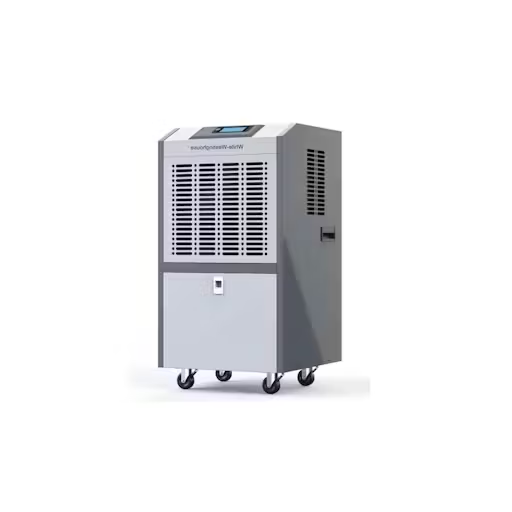
Choosing Between Desiccant and Refrigerant Dehumidifiers
In environments where storage depends on specific needs attributable to the climate, the selection of a dehumidifier should be prudently arrived at. Low-temperature and low-humidity situations make desiccant dehumidifiers efficient, as they use adsorbent materials to pull out moisture from the air. In contrast, these systems are suited for simple industrial storage environments, cold rooms, or anyplace that remains below 59°F (15°C) consistently. Since the desiccant dehumidifier is unaffected by any significant temperature variations, it will diffusely dehumidify almost around the clock, becoming a truly stabilized moisture control environment.
Refrigerant dehumidifiers, meanwhile, condense moisture out of the air and work best in warm and moderately humid environments. Above 65°F (18°C) is the optimum working condition for these machines to keep moisture from around warehouses or storage in residences. In these conditions, they are most energy-efficient compared to their desiccant counterparts but as the temperature dips, they lose efficiency because of freezing of the coils or reduced condensation.
For temperature conditions that tend to fluctuate, a combined approach may offer the best efficiency. Hybrid or dual system dehumidifiers which contain aspects of both technologies allow for dynamic adaptability. Sensors that monitor conditions like temperature and humidity can be used to integrate control systems on top of that, optimizing cost wished control by ensuring the technology selected always addresses present environmental aching. Some studies list initial 20% cut-down on operational inefficiency if the storage environment is well analyzed in advance, emphasizing the importance of choosing the correct dehumidification unit for a long-term winning solution.
Selecting the Right Commercial Dehumidifier with Pump
When you set out to buy a commercial dehumidifier furnished with a pump, a multitude of factors need factoring in for the sake of a well-performing and cost-effective operation. First, a dehumidifier with a capacity of pints or liters per day must match the area size and humidity level of the intended space. For an area above 10,000 square feet or a heavy moisture load, a great choice would be a capacity great than 150 pints per day.
The second thing to note and a very important one is probably the capacity of the pump and drainage setup in order to provide for water transfer continuously. Units with high-lift pumps can carry water vertically up to 15 feet-high level, making them suitable for areas without convenient drainage into floors. Additional features such as automated controls with hygrometers and timers may further enhance the efficiency of the entire setup by adapting to changing real-time humidity levels.
Since commercial dehumidifiers are generally run round the clock, energy consumption must be factored in; Energy Star models are best suited to cutting down on such costs. Noise level also matters and is too often an overlooked factor: for quiet environments like offices or medical spaces, noise levels below 60 decibels would be preferred.
Durability and ease of maintenance are other aspects to weigh in. Units whose coils resist corrosion and whose filters are washable will maintain themselves better and be more cost-effective to operate in the long run. These technical considerations put alongside pertinent data allow for a dehumidifier selection that best suits prolonged environmental control and operational efficiency.
Advantages of a Portable and Energy-Efficient Solution
Portability and energy efficiency are important features that bring several advantages to commercial and residential applications. The benefits afford flexibility of operations, help save costs, and promote environmental sustainability. A quick rundown on some key advantages is presented below:
- Enhanced Mobility for Versatile Applications: Portable units are usually lightweight and have wheels or handles to shift from one area to another requiring dehumidification at will. They provide unusual applications and disallow one from installing multiple stationary systems, an alternative that is usually prohibitively costly for larger spaces.
- Reduced Energy Consumption: Modern energy-efficient dehumidification modes feature advanced technologies such as variable-speed compressors and smart humidity sensors. Such components cut down energy consumption by half or by, audit 30%, compared with that of a conventional unit. Of course, in the long run, a big difference is made to the electricity bills.
- Lower Carbon Footprint: Being low-insulated from energy, they reduce the emissions of greenhouse gases. In addition, many of the models comply with the ENERGY STAR specification and thus achieve sustainability without compromising on performance.
- Cheap Maintenance: The user friendly portable units are equipped with easy to remove tanks and filters, enabling one to maintain the equipment with zero technical skills required. This, of course, cuts the maintenance and servicing cost and also minimizes the downtime of the equipment.
- Optimized Performance in Dynamic Environments: Modern-age portable dehumidifiers automatically assess humidity variations in real-time and adjust their operations accordingly. Adaptive operation control ensures that nominal working conditions are sustained across variable environmental parameters, thus causing even surroundings ideal for storage, manufacturing, or everyday comfort.
Together, these make the portable and energy-efficient hydration solution one worthy for humectation control.
How to Select the Right Dehumidifier for Your Warehouse?
Factors to Consider for Optimal Climate Control
- Size and Coverage Area: Depending on the size and shape of the warehouse, this determines the dehumidifier needed by questioning the moisture drain rate of dehumidifier units rated in pints per day. One must accurately measure the space, including ceiling height, since volume of air taking in moisture will also determine the capacity of a dehumidifier.
- Humidity Removal Rate (or Dehumidification Load): Examine various humidity conditions in the warehouse. It depends on the weather of the season, the nature of goods stored, and natural moisture influx from various causes like loading operations. Dehumidifiers with adjustable extraction rates provide well-regulated moisture control depending on evolving requirements.
- Energy Efficiency Ratings: Search for units with Energy Star certification or those awarded with a high Coefficient of Performance (COP). Such units consume energy at the least possible level, which is very important in a large-scale operation where units are running and working all day long or for an extended period. An investment in energy-efficient technology will pay for itself in saved operating costs.
- Drainage and Water Removal Systems: For warehouses, advanced drainage options like continuous drainage with a built-in pump are absolutely necessary. This avoids downtime due to manual emptying of water reservoirs and allows uninterrupted operation that is key in maintaining product integrity.
- Airflow and Circulation Rate: The CFM rating of the unit means that higher CFM is suitable for big commercial spaces for even humidity distribution.
- Durability and Build Quality: Commercial dehumidifiers should be built with hard-wearing materials to withstand the maintenance of corrosion, dust, and temperature changes. Stainless steel components along with strengthened casing guarantee a longer life and trusted performance under 24/7 operation.
- Controls and Automation Technologies: An advanced humidistat and programmable control system provide accurate climate control as well as real-time updates. IoT integration allows remote access and also enables predictive maintenance.
- Noise Levels: It is desired for the dehumidifiers to be less noisy, especially in warehouses with offices and other working areas nearby. Noise values, measured in decibels (dB), can be used to identify the acceptable noise limit.
- Compliance with Industry Regulations: Some industries pose strict humidity conditioning for the preservation of products (for instance, pharmaceuticals, or perishable goods). The dehumidifier must meet the industry’s guidelines to keep hygiene, safety, and quality standards.
By considering these matters, businesses will effectively determine a dehumidifier that is best for their unique operational needs, giving continued climate control with minimum wastage of resources.
Balancing Humidity Levels for Stored Goods
Maintaining stability in humidity levels is among the vital aspects of maintaining the preservation and service life of goods in stores. Too much moisture leads to condensation, which in turn causes repression of mold, corrosion, or material degradation, depending on what type of product is involved. While food industries require an environment where RH is between 50 and 60% to avoid microbial growth and spoilage, pharmaceutical storage demands RH below 40% to ensure compliance with standards and product efficacy.
Being the latest in dehumidification, these systems combine desiccant wheels and refrigerant-based methods to achieve-dehumidifiers-to-hold-desiccant-wheels. It has been proven that by maintaining standard humidity levels, spoilage of perishables drops almost 30% every year. Since many of the modern-day systems work based on sensors and IoT-enabled sensors for monitoring the current environment in real-time, these systems can make efficient modifications and hence, use energy-saving methods that reduce overall operational costs.
Following these methods helps a company to secure its inventory from risks due to moisture, meet industry standards, and maintain operational sustainability.
Understanding Space and Operational Needs
It is by defining the needs any facility or enterprise may have that we ensure efficiency in its working. By analyzing spatial requirements, firms may optimize layout setups, workflows, and utilization of resources to enhance productivity. However, operational requirements usually vary depending on particular criteria such as the industry in use, equipment involved, and desired output, to name but a few. Manufacturing processes need to plan for trench allocation of floor space meant for heavy machinery, while storage needs to have vertical stacking capacity to maximize their utility.
The real gears and mechanisms behind the evolving dynamics of solving space and operational requirements are cloud computing, IoT-enabled apparatus, and predictive software tools. For instance, IoT sensors can track all parameters-it can track temperature, humidity, and air quality-now, being maintained to ensure even all the industry regulations and keep away disruptions. Or, in another way, predict analytics to ascertain bottlenecks in operations so that an organization may take corrective strategies to streamline workflows and improve decision-making processes.
This approach will enhance operational strategies while decreasing the time operators have to manually sift through phrase-based search results. The better-known the data accumulation method is, the faster a company will be able to accommodate shifting market demand and ensure its viability over the long term. Therefore, the paradigm of space optimization combined with data-driven operational strategies is central to a successful fight in the contemporary business domain.
What Are the Benefits of Maintaining Proper Humidity Levels in Storage Facilities?
Preserving Stored Goods from Corrosion and Rust
Controlling optimum temperatures and humidity for storage runs highly parallel with corrosion and rust prevention on metal equipment or surfaces. Too much moisture in air accelerates oxidation, a chemical reaction in which an oxygen bullies and damages metals accompanied by structural degradation and weakening of materials, and losing operational efficiency. Temperature and humidity levels in a given metal-storage facility will ordinarily be kept below 50% relative humidity to check and contain corrosion.
Advanced climate-control systems with sensors for real-time monitoring are able to manipulate humidity and temperature well. Upon departure from standard characteristics, the system automatically begins control; for example, to switch on a dehumidifier for an environmental change. Following statistical analysis and research data, it has been proved that such measures could increase the product lifetime by at least 30 per cent, thereby drastically reducing replacement and maintenance costs. Preventive maintenance ensures that goods stay in pristine condition, stability, and operational efficiency and boost the financial reserves of a business.
Through the use of ample data analytics plus systematic environmental monitoring, storage facilities can sustain them and maximize asset protection without needing to rely on general solutions like phrase-based guidelines. Instead, precise, actionable solutions guarantee compatibility with modern industrial standards and requirements.
Enhancing Facility Longevity and Efficiency
In an ideal world, infrastructure needs to be impregnated with latest technology and data analytics to assure maximum facility longevity and operational efficiency. IoT-sensor- and machine-learning-algorithm-based predictive maintenance systems monitor the performance of machinery and environmental conditions simultaneously. So, a very proactive approach is taken, so they try to stop potential issues from becoming a critical failure that causes downtime and huge repair costs.
Energy management systems are then further integrated in order to better utilize the resources; consumption patterns are analyzed along with the pinpointing of possible maximization areas. LED light systems combined with automated sensors, for example, can help cut energy consumption of large warehouses while satisfying illumination criteria.
Furthermore, the management of facilities best practice involves a detailed environmental mapping and the assessed solutions for materials storage. Smart climate control ensures a storage area maintains the required levels of temperature and humidity to keep products in good condition while saving on energy costs. Modular designs in facility layouts ensure scalability that can respond to increased operational needs with minimum retrofitting.
Together, they form an all-encompassing strategy for the enhancement of longevity and efficiency of a facility, especially when used in conjunction with a systematic performance review of the facility and changing industry standards. By emphasizing data-driven decisions, the organization lays down the foundation for integrating the latest technologies to ensure the evolution and robustness of their facilities.
Reducing Moisture-Related Damage Continuously
Moisture-related damage continues to represent one of those ever-present challenges in facility management. It can bring about structural degradation, compromise indoor air quality, and raise uphill operational costs. A proactive and systematic way of mitigation shall be adopted in setting placing risk factors. Real-time monitoring of moisture using advanced systems through IoT sensors is highly recommended. The system may report an unusual event of leakage, seepage, or humidity, thus bringing the issue undercontrol before raging into structural damage, hence consequent IoT analysis can deny a higher probability in prediction where physical inspection and more frequent maintenance shall be done.
Material considerations come next in minimizing moisture-related vulnerabilities. Water-resistant materials such as treated wood, moisture-resistant dry-wall, or advanced polymer-based alternatives may be considered for improving the facility against humidity and water intrusion. Further, applying vapor barriers and correct insulation during construction will also be beneficial so that moisture is appropriately controlled within different building zones. Retrofits, such as waterproof coatings and sealants offered to the building, provide an extra coating of protection in existing buildings, characteristically in basements and roof areas where exposure is high.
The other important factors determining moisture-related damage entail studying and maintaining the system in the building that manages ventilation and air circulation. HVAC systems with the added feature of dehumidification shall be selected so as to maintain the control of environmental moisture and hazardous condensation. Maintenance concerning drainage systems, roofs, and gutters shall also bear importance for managing mountain sources of moisture on the outside in a flash. The integrated utilization of technological advances, sturdy materials, and mindfully laid-down maintenance schemes shall ensure the uptick of the operational life of the facility with the survival of high standards to safety and functionality.
How to Install and Maintain a Dehumidifier with Drain Hose in Basements and Crawl Spaces?
Steps for Installation and Setup
- Select the Location: For optimum air movement, any dehumidifier should be positioned at least 6 to 12 inches away from walls or any obstruction. Positioning the unit in the most humid part of the basement or crawl space maximizes its efficiency.
- Prepare Drain Hose: Select a compatible drain hose that fits securely into the drainage outlet of the unit. The hose and drainage outlet must be slightly down-sloping all the way to the nearest floor drain or sump pump basin to allow for proper gravity drainage.
- Leveling of the Dehumidifier: The dehumidifier must be installed and positioned upon a perfectly level surface to prevent the malfunction of its internal components and to facilitate the proper drainage of water. A leveling tool might come in handy, especially in uneven crawl spaces.
- Attach Drain Hose: Attach securely the drain hose to the outlet, and to avoid leaks, check once more to ensure it is tightly connected. If necessary, use a hose clamp for added security.
- Turn On and Adjust Settings: Plug the dehumidifier into a grounded electrical outlet. Turn on the dehumidifier and set the humidity level between 30%-50% for basements and crawl spaces. Consult the manufacturer’s guide for further adjustments specific to your environment.
- Test Drainage Operation: Allow a small amount of water to pass into the reservoir or create an artificial humid environment to ensure that water is properly channeled by the drain hose toward the drainage. Confirm that there is no obstruction or leakage along the drain hose.
- Check and Clean Filters: Ensure to check that the air filter is clean before operating the machine. Clean and replace filters as the manufacturer recommends for sustaining optimum operational performance and air quality.
- Perform Routine Maintenance: Look out regularly for any blockages or damage to the hose, monitor the dehumidifier’s performance, and clean out any debris that has accumulated inside the unit to prevent operational inefficiency.
According to these determined steps step by step, the installation and maintenance of the dehumidifier and drain hose can only bring about execute a much better level of control over the enclosed spaces packed with humidity, resulting in mold, mildew, and structural deterioration problems. Maintenance is key for a longer operational life and improved functional capabilities.
Ensuring Low Relative Humidity in Challenging Spaces
Condensation control of low relative humidity in challenging spaces would necessitate the use of advanced technology and methodical strategies tailored to the specific environment conditions. One such approach is the proceed with placing high-capacity dehumidifiers equipped with smart sensor technology. Such systems go to work automatically upon receiving real-time humidity readings; hence, the device would lower control humidity during human inactivity.
Coupled with dehumidifier operations, air circulation systems such as variable speed fans or HVAC upgrades ensure condensation in this space is uniformly distributed. This minimizes moisture accumulation in irregular areas. Insulating walls, ceilings, and even pipework helps because it lessens condensation.
On the other hand, for recording and measurement, the most advanced sensors and measurement systems using IoT provide constant logging as well as remote access to humidity data. These insights allow for the fine-tuning of the equipment and the early detection of anomalies, such as imbalances in moisture or equipment failures, enabling mitigation of risks that could lead to mold growth or compromised structural integrity.
With these considerations and the advancements in the control of humidity, users can achieve precise control over relative humidity even in the most difficult environmental conditions. This would protect from the degradation of materials and structures, create energy efficiency, and the best indoor air quality.
Regular Maintenance for Dehumidification Solutions
Regular maintenance is required to run the dehumidification systems at their best. Proper upkeep involves some methodological procedures that concern themselves with the mechanical and some functional aspects of these systems. Filters should be checked and changed from time to time with the aim of keeping airflow from being restricted due to the accumulation of dust and other particulates. Keeping systems efficient decreases the chances of contaminants being recirculated back into the environment.
Furthermore, it is necessary to check the drains of condensate, pumps, and tubing for clogging or leaks, as these can delay water removal and reduce their efficiencies. Evaporator and condenser coils, on the other hand, need to be cleaned for the heat exchange purposes, which could involve unnecessary load on the compressor. Sensor calibration and control shall be carried out to obtain desirable and consistent humidity values corresponding to user-defined setpoints.
Checking the status of electrical wiring and connections shall be carried out so that any wear, corrosion, or deterioration, which may result in failure or safety hazards within the system, can be identified under time. Using advanced diagnostics, such as infrared thermal imaging, can also be beneficial in identifying irregularities early on.
By merging these maintenance practices with insights from recent technological developments, like real-time monitoring and IoT integration, operators stand to benefit from not just extending life expectancy and sustained efficiency of dehumidification systems but also their reliability while making operational downtime at an absolute minimum possible.
References
-
Investigation of Destratification in Warehouses – This study explores indoor environmental conditions in warehouses and industrial facilities.
-
Seed Processing and Storage Facilities for Tropical Areas – Discusses the use of industrial dehumidifiers in warehouse units for seed storage.
-
Improving Energy Efficiency in a Pharmaceutical Manufacturing Environment – Includes theoretical models of dehumidifiers and their application in industrial settings.
Frequently Asked Questions (FAQ)
Q: What are the benefits of using industrial dehumidifiers within the warehouse?
A: Industrial dehumidifiers provide numerous benefits, including the reduction of high humidity levels, prevention of moisture-related issues, and protection against costly repairs by maintaining optimal climate conditions.
Q: How do I go about selecting the appropriate dehumidifier for my warehouse?
A: Selecting the appropriate dehumidifier involves assessing your specific requirements, such as the size of the warehouse, existing climate conditions, and the presence of high moisture areas. Consider whether a pint commercial unit or a desiccant model is more suitable for your needs.
Q: What is the role of a drain hose for basements in dehumidifiers?
A: A drain hose for basements is often used in dehumidifiers to facilitate continuous drainage of collected water, making it particularly useful in areas where manual emptying is not feasible.
Q: How do desiccant dehumidifiers differ from other types?
A: Desiccant dehumidifiers specialize in removing moisture from the air without the need for cooling coils, making them effective in cold storage and areas with lower temperature conditions.
Q: Can industrial dehumidifiers be customized for specific warehouse requirements?
A: Yes, many manufacturers offer options to customize dehumidifiers to meet the specific requirements of a warehouse, including ceiling-mounted designs or automatic controls for seasonal adjustments.
Q: Why is managing humidity essential in distribution centers?
A: Managing humidity is essential in distribution centers to prevent moisture-related issues such as product damage, mold growth, and compromised structural integrity, ensuring that goods remain in optimal condition.
Q: How do dehumidifiers help in preventing heating issues within a warehouse?
A: Dehumidifiers help by removing excess moisture from the air, which can lead to more efficient heating and cooling operations, reducing strain on HVAC systems and preventing energy wastage.
Q: What maintenance is required for industrial dehumidifiers?
A: Regular maintenance for industrial dehumidifiers includes cleaning or replacing filters, checking the drain hose for blockages, and inspecting the unit for any signs of wear or damage to ensure optimal performance.

